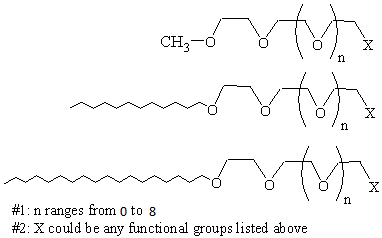“Beauty and the Beast” is one of the famous fairy tales that most of us have heard in our childhood at least once. If you could have such a beauty that “Beauty” could have? It’s very usual that most of us love to get such beauty as much as we can. Aren’t we?
Normally, your own beauty is a blessing and we must save it as much as we can for our life long. It’s a norm that anyone gets hardly satisfied by his/her own beauty if he/she gets a chance to get much more beautiful. We do numerous things to make ourselves beautiful externally. For that, “cosmetics” is a major chemical formulation used for beautifying the external human body.Cosmetics can also be classified as drugs because they affect changes in body functions too. Cosmetics are intended for cleansing, beautifying, promoting attractiveness or altering the appearance of the human body or any part of it. Most of the cosmetics consist of emulsifiers, active ingredients, moisturizers, waxes, preservative and coloured pigments.
Skin care: emollients, creams, suntan lotion
Decoration: lipstick, face powder, eye makeup, nail polish
Odor control: deodorants, perfumes, aftershave lotions, colognes
Hair applications: permanents, colorations, bleaches, sprays, depilatories
If we continue something regularly for a long time, we may be able to find out the pros and cons of the usage. With the new technology, we investigate and efficient methods. We used to make the thing better and again when we find anything bad, there again we try to find a better way. That’s the nature and the same happens in cosmetic industry. With the benefits they also sometimes bring the danger to us if we use them with lack of knowledge. As Nerdynaut readers, you are intellectual to explore the best you can gain. Getting updated by the new updates in the industry, you may find out the best and most protective cosmetic product that is suitable for you. As a main step, let’s have a look at cosmetics through the window of Chemistry to get rid of the side effects of cosmetics.
1. Phthalates
Phthalates are a group of chemicals that may be disruptive to the endocrine system which is responsible for hormone production.The study by the University of Maryland reported that exposure of Phthalates could cause reproductive abnormalities and decreased production of Testosterone in males decreasing male fertility while giving a high probability in premature delivering and endometriosis in women.
Phthalates are mainly used to plasticized products making them more flexible or better able to hold in colour and scent. But we can find them from deodorant to nail polish and scented lip balm as fragrance.
DBP (Dibutyl phthalate) is another member of this Phthalate family that is being used in nail polish to minimize chipping. They are also classified as endocrine disruptors and mimic the hormone estrogen in body. They are proven to impair the hormonal development of male fetuses causing organ damage and may even instigate early-onset menopause. This is banned in Europe and many other countries to have in nail polish.
2. Quaretnium-15 and other Formaldehyde releasing preservatives
Formaldehyde gas is classified as a known human carcinogen by the US Department of health and Human Researchers and the international agency on cancer. The European Union mandates that Formaldehyde-releasing preservatives in cosmetics be labeled as such if they exceed 0.05%. Formaldehydes are frequently found in many of the nail polish products.Quaretnium-15 is very commonly used in mascara, pressed powders and eyeliners. In addition to cancers they can cause for skin sensitive and irritations.
Never use eye makeup during any eye infection, injury or surgery etc. The best is using natural alternatives that perform similar functions such as rosemary, honey, tea tree oil, grape food seed extract and vitamin E.
3. PEG Compounds
Polyethylene glycols or PEGs are petroleum-based compounds that are used to thicken, soften and gelatinized cosmetics making them a common ingredient in cream-based products. PEG Compounds also enhance the penetration of other ingredients into your skin.The main issue of this is that they are often contaminated with Ethylene oxide and 1 4- dioxane. Ethylene oxide is found as a known human carcinogen while potentially harmful to the nervous system and the development of human. It can remain in the environment for a long period of time without degrading. The number next to PEG indicates how many units of the ethylene glycol they comprise, such as PEG-4 or PEG-150. The lower the number, the more easily the product absorbs into your skin.
The Polyethylene glycol polymers are used in a wide variety of products including bath products, shaving products, makeup, skin cleansing products, shampoo, hair conditioners and deodorants.
PEG main causes are irritations or skin sensitization. Yet, the main takeaway for PGE is that they should be avoided if you have broken or damaged skin.
4. Butylated Compounds (BHT, BHA)
This is another harmful unhealthy ingredient banned in Europe which is highly noted as a chemical with high potential for bioaccumulation. So, we can keep them on ourselves for long period of time. Long term exposure to high doses of BHT is toxic in mice and rats, causing liver, thyroid and kidney problems and affecting lung function and blood coagulation. Limited evidence suggests that high doses of BHT may mimic estrogen in females and prevent expressions of male hormones linking to organ developmental and reproductive toxically and may induce skin allergies.
They are used as preservatives in dozens of products. Like eye liners, eye shadows, lipsticks, lip glossers, blushes, foundations, perfumes, moisturizers, skin cleansers etc.
5. Parabenes
One of the classes of ingredients that you should avoid in your makeup products is parabene. They are the mostly widely used preservatives in cosmetics and no trouble in penetrating your skin.The European Commission on Endocrine Disruption list parabene as a category 1 priority substance since of the evidence they interfere with hormones function. Parabenes can mimic estrogen and have detected in human breast cancer tissues. They also interfere with reproduction as well as in nervous system. Later because of this bad reputation, some companies now use Phenoxyethanol but it also has the many of the same harmful effects. Japan is one of the countries which banned this chemical.
I have already talked your ear off. So I’ll keep some more chemicals described in detail for my next article. Hope you would put these ingredients on your radar when you buy cosmetic products next time.






